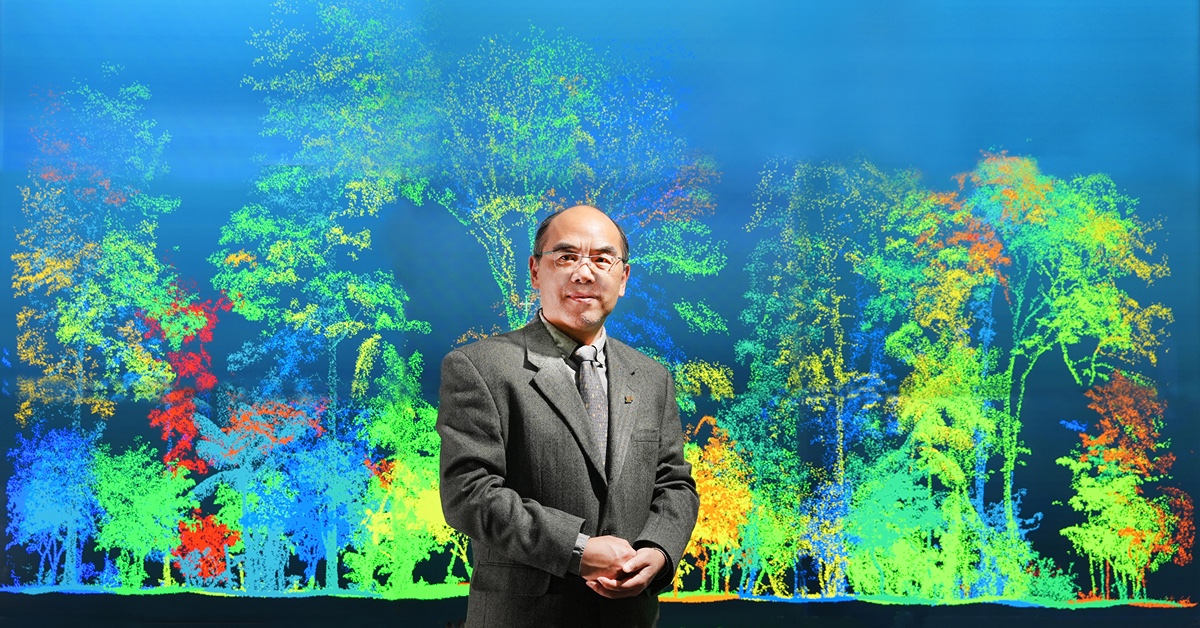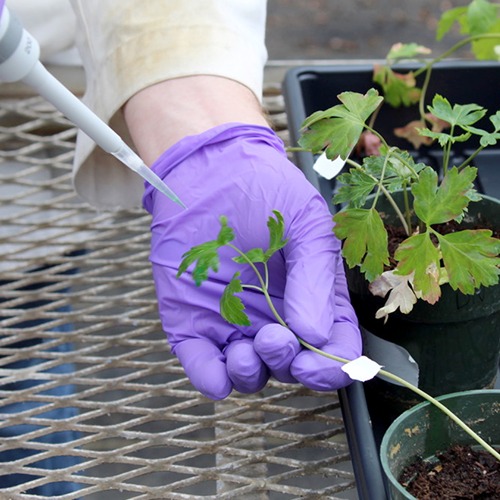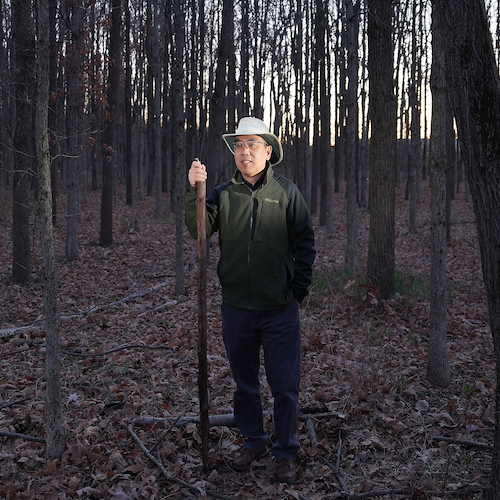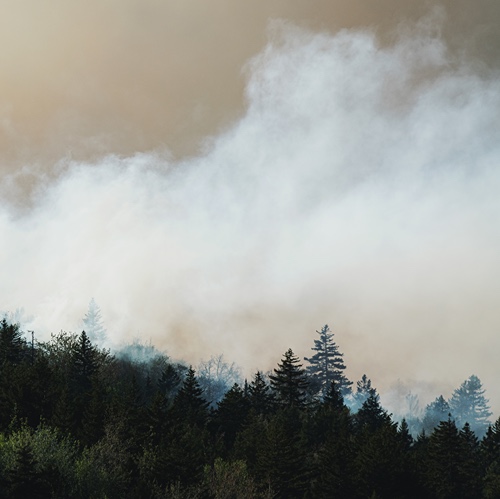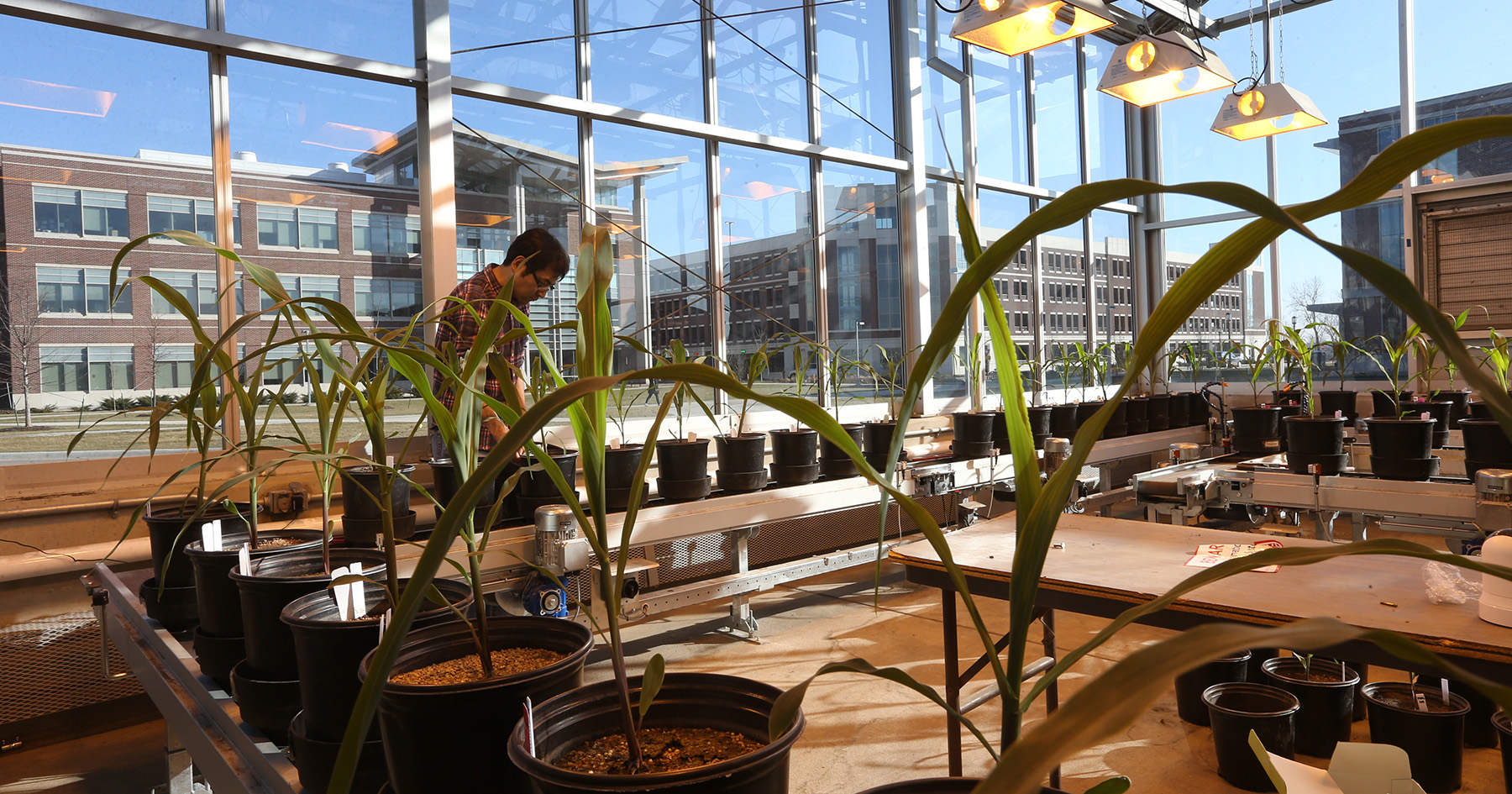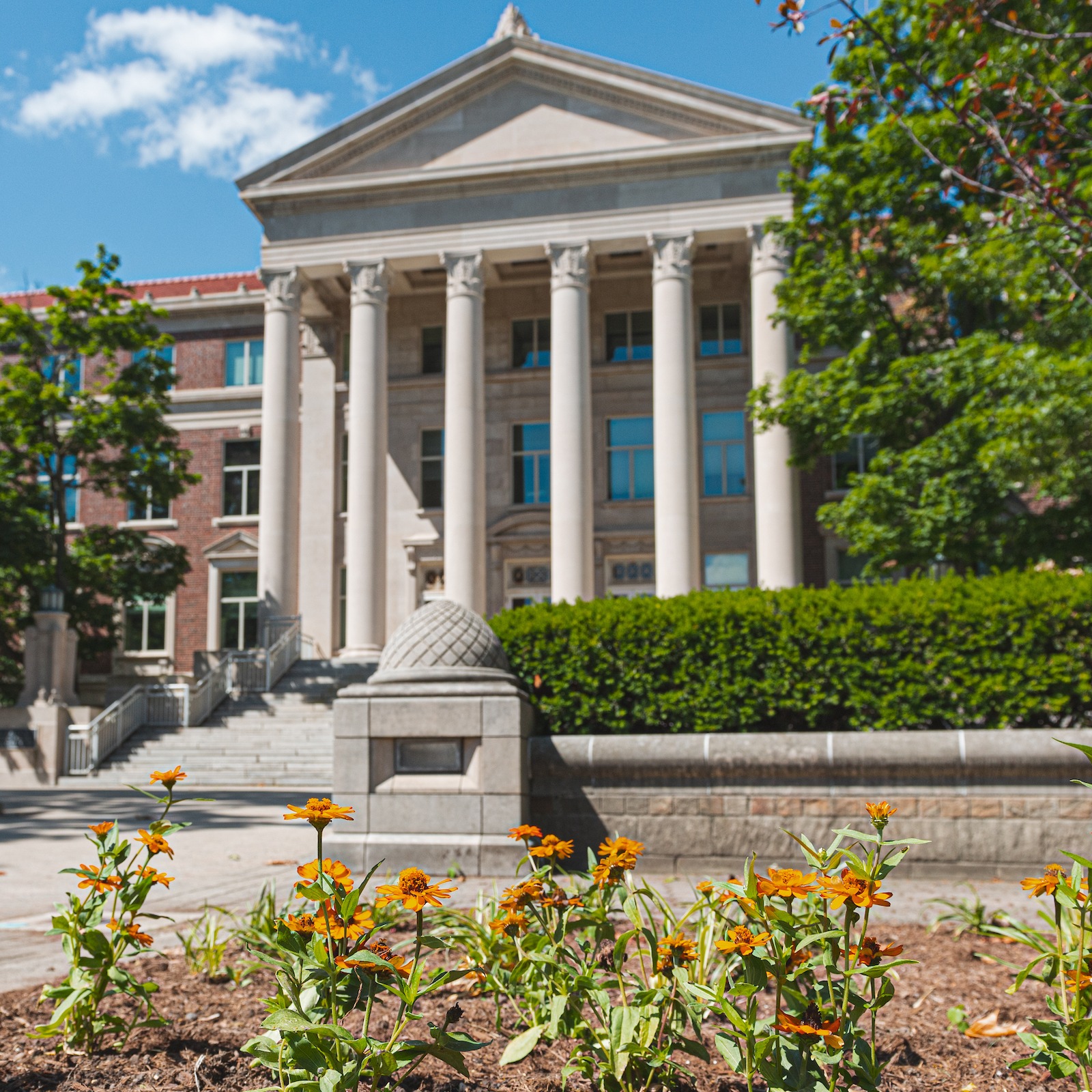Purdue University has received a five-year, $10 million grant from the U.S. Department of Agriculture to increase the production of seafood, also known as “blue food,” which is healthier and more sustainably produced than land-based foods.
“Many studies indicate the importance of increasing seafood consumption in U.S. diets,” said Jen-Yi Huang, project director and associate professor of food science at Purdue University. Those studies show that seafood can boost intake of healthy omega-3 fatty acids, vitamins and minerals while also reducing more harmful substances such as cholesterol and saturated fat.
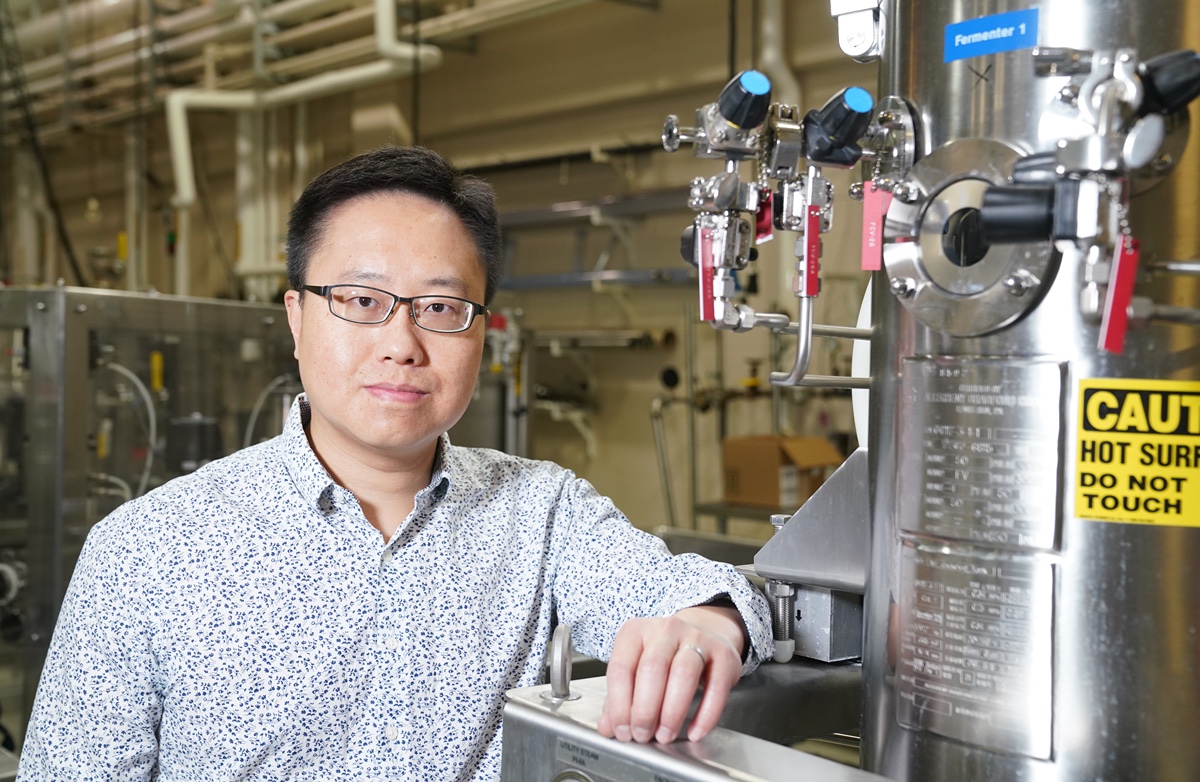 Jen-Yi Huang, associate professor of food science at Purdue, leads the Sustainable Blue Food Systems project, funded by a $10 million grant from the U.S. Department of Agriculture’s National Institute of Food and Agriculture.
Jen-Yi Huang, associate professor of food science at Purdue, leads the Sustainable Blue Food Systems project, funded by a $10 million grant from the U.S. Department of Agriculture’s National Institute of Food and Agriculture. A 2021 blue food assessment published in the journal Nature found that a 15.5-million-ton increase in aquatic animal-source food by 2030 would decrease the price of such food by 26%. The resulting increase in blue food consumption would result in preventing an estimated 166 million cases of inadequate intake of micronutrients such as vitamin A, calcium and iron worldwide.
Seafood is readily available in local grocery stores, but most of it is imported from Asia and elsewhere. Such long-distance supply chains recently have proven vulnerable to volatile markets, fluctuating fuel costs, the COVID-19 pandemic and regional war, said Huang, who also holds a courtesy appointment in Environmental and Ecological Engineering.
About 90% of U.S. seafood comes from abroad, resulting in a $17 billion trade deficit. U.S. fisheries are not sustainable because of overfishing concerns, Huang noted. Aquaculture — growing aquatic organisms under controlled conditions — offers an alternative.
Aquaponics is a combination of aquaculture and hydroponics (growing plants in water) that offers the advantage of intensively producing seafood and plants using less land and water than conventional food production.
The Midwest especially could benefit from aquaponics. The region suffers high obesity rates, operates the fewest aquaculture farms and consumes the least amount of seafood.
“It can increase production yields, but aquaponics production hasn’t been widely adopted, especially in the Midwest,” Huang said. Energy use in the required greenhouse environment is one key reason.
Aquaponics operations require the daily discharge of up to 20% of wastewater into the environment. For large farms, that becomes a maintenance cost because they need permits to treat their wastewater before discharge.
“The smaller farms don’t need permits,” Huang said. “They can discharge whatever they generate, which can cause environmental issues.”
With the USDA funding, Purdue researchers will build a pilot-scale integrated aquaponics system on campus, where some lab-scale components already exist, to produce tilapia and lettuce.
Paul Brown, professor of forestry and natural resources, operates experimental aquaponics systems in the Aquaculture Research Lab. Halis Simsek, assistant professor of agricultural and biological engineering, maintains bioreactors in his laboratory for algae cultivation. Jiqin Ni, professor of agricultural and biological engineering, works with anaerobic digesters, which use microorganisms to break down biodegradable matter in an oxygen-free environment.
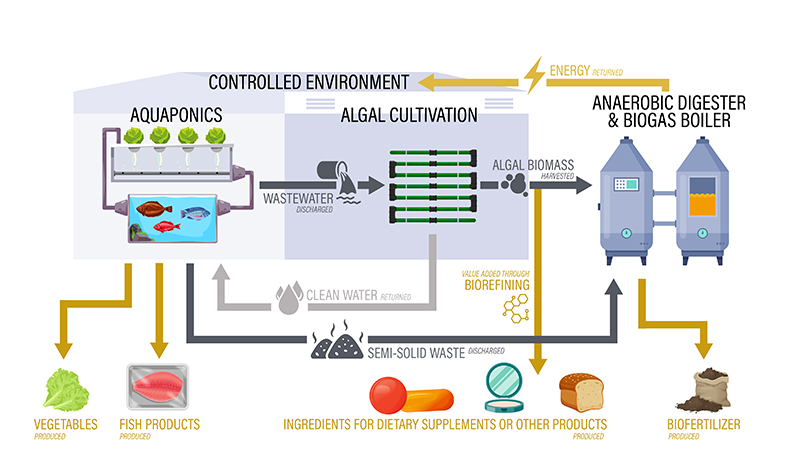 Purdue researchers will build a pilot-scale integrated aquaponics system on campus to produce tilapia and lettuce. This zero-waste food production system will convert nutrient-rich waste into energy for system operation and high-value bioproducts. (Illustration by Tom Kronewitter)
Purdue researchers will build a pilot-scale integrated aquaponics system on campus to produce tilapia and lettuce. This zero-waste food production system will convert nutrient-rich waste into energy for system operation and high-value bioproducts. (Illustration by Tom Kronewitter) Additional Purdue researchers collaborating on this research are Natalie Carroll, professor of agricultural sciences education and communication and agricultural and biological engineering; Abigail Engelberth, associate professor of agricultural and biological engineering and environmental and ecological engineering; Betty Feng, assistant professor of food science; Andrea Liceaga, associate professor of food science; Lindsey Payne, assistant professor of environmental and ecological engineering; Kwamena Quagrainie, professor of agricultural economics and forestry and natural resources; and George Zhou, associate professor of civil engineering and environmental and ecological engineering.
Also on the team is Nicole Wright, aquaculture extension educator at The Ohio State University.
“Algae cultivation and anaerobic digestion are two of the most important components in Purdue’s integrated aquaponic system,” Ni said. “We use the algae to treat the wastewater and also anaerobic digestion to treat the algal biomass and other waste streams like fish processing wastes.”
The Purdue system will direct the aquaponics wastewater discharge into algal bioreactors, where algae can feed on its nutrients. The next step is anaerobic digestion, which generates biogas fuel as one of its products.
“That energy can be sent back to the aquaponics system to offset the energy requirement of the indoor facility operation, at least partially,” Huang said. The system is designed to generate zero waste and to operate independently of the power grid.
The system also includes a biorefinery subsystem to convert algae and fish byproducts into high-value nutraceuticals such as bioactive peptide and phenolic compounds. The biorefinery can turn the algae into fish feed for the aquaponics operation as well.
“By integration with the biorefinery, we can have additional revenues for aquaponics farmers so that they can improve their economic viability,” Huang said. “We will develop multidimensional sustainability metrics for system assessment and management to make sure that this kind of integration is technically feasible, economically viable and environmentally friendly.”
The project will further include stakeholder education and outreach components. The research team will survey farmers and suppliers about the barriers and opportunities for blue foods and aquaponics. The team also will develop workshops to help interested farmers build aquaponics systems or improve their existing operations.
In addition, the grant will foster a workforce that can support blue food production by funding the creation of educational materials for high school, undergraduate and graduate students.
“We also want to educate consumers on the benefit of blue foods so that they can diversify their dietary pattern to include more blue foods and ultimately improve health,” Huang said.
